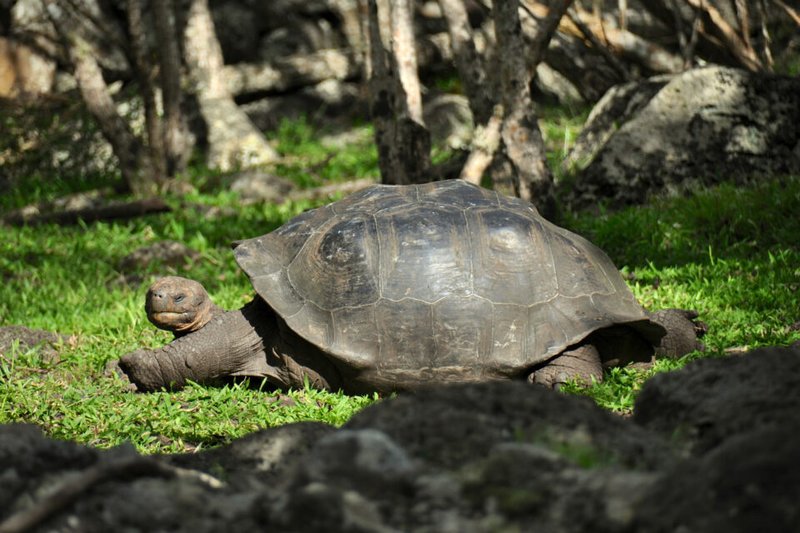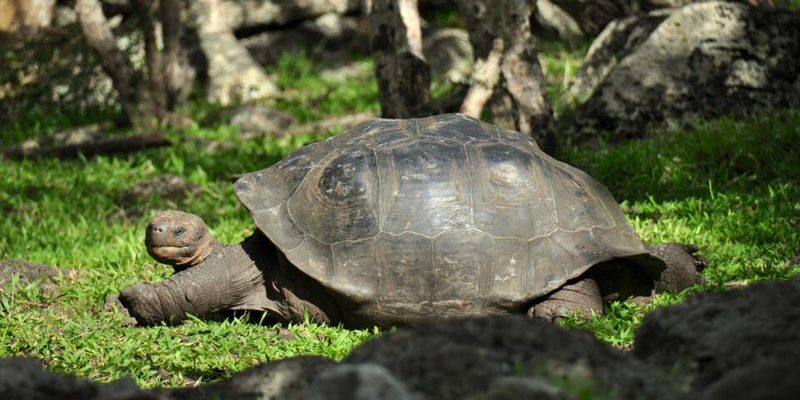
The Galápagos Islands, where these tortoises call home, are a treasure trove of biodiversity. From the rugged volcanic terrain to the lush green highlands, each environment hosts different subspecies of tortoises. This variety makes the Galápagos tortoise a perfect example of evolution in action. As we dive into their history, keep in mind that each tortoise you see today carries the legacy of millions of years of survival, shaped by both their environment and human impact.
The Origins of the Galápagos Tortoise
The Galápagos tortoise is part of the family Testudinidae, which includes all tortoises. Scientists believe these giants arrived on the islands about 2 to 3 million years ago, likely floating on vegetation rafts from the mainland of South America. Here’s the thing: once they reached the islands, they adapted in ways that would have been unimaginable in their original habitat.
Why did they adapt? Well, these tortoises encountered various ecological niches, meaning they had different resources and challenges. Some tortoises evolved to have high domes, perfect for reaching high shrubs, while others developed lower, flatter shells suited to grazing on grass. This adaptability shows just how flexible life can be when faced with new environments.
Interestingly, the Galápagos tortoise is often seen as a symbol of Darwin’s theory of natural selection. Charles Darwin studied these tortoises during his visit to the islands in the 1830s, noting their varied appearances. His observations helped him develop ideas that changed our understanding of biological evolution.
The Diversity of Subspecies
One of the remarkable aspects of the Galápagos tortoise is the existence of different subspecies across the islands. There are currently 15 recognized subspecies, each uniquely adapted to its specific island environment. For instance, the Hood Island tortoise has a high-domed shell, while the Española Island tortoise features a saddle-shaped shell.
Different food sources and environmental conditions led to these adaptations. On some islands, the tortoises have access to lush vegetation, while others provide sparse, dry landscapes. This variation means that each subspecies has adjusted its diet and physical characteristics to ensure survival.
It’s worth noting that the tortoises can weigh over 500 pounds and can live for over a century! Their longevity is a testament to their resilience and how well they’ve adapted over time. When you see a Galápagos tortoise, you’re not just looking at a large reptile; you’re witnessing an incredible story of evolution and adaptation.
Human Impact and Conservation Efforts
Unfortunately, the story of the Galápagos tortoise isn’t just about survival and adaptation; it also involves significant human impact. When humans first arrived in the Galápagos, they brought invasive species like rats, goats, and pigs that disrupted the delicate balance of the islands’ ecosystems. These invaders preyed on tortoise eggs and competed for food, threatening the survival of these giants.
Conservationists recognized the urgent need to protect the tortoises and their habitats. Organizations like the Galápagos Conservancy and the Charles Darwin Foundation have worked tirelessly to restore habitats, control invasive species, and breed tortoises in captivity. Their efforts have led to increases in tortoise populations, particularly for some subspecies that were on the brink of extinction.
Here’s the thing: conservation isn’t just about saving the tortoises; it’s about preserving an entire ecosystem. By protecting the Galápagos tortoise, we protect countless other species and help maintain the ecological balance of these unique islands.
Captive Breeding and Restoration Programs
To combat declining populations, captive breeding programs have been established for the Galápagos tortoise. These initiatives have not only increased numbers but also educated the public about the importance of conservation. For example, the tortoises are raised in safe environments until they’re large enough to fend for themselves against predators.
In recent years, some programs have seen success in reintroducing tortoises back into their native habitats. These efforts are critical, as they help restore the natural balance of the islands and allow tortoises to thrive in the wild once again. It’s a slow process, but every small victory counts.
You might be wondering how you can help. Being aware of conservation efforts and supporting organizations that protect the Galápagos Islands is a great start. Every little bit helps in the fight to ensure these magnificent creatures continue to grace our planet.
The Future of the Galápagos Tortoise
As we look to the future, the survival of the Galápagos tortoise depends on continued conservation efforts and environmental awareness. Climate change poses new challenges, affecting food sources and habitats. Scientists are working hard to understand how these changes may impact tortoise populations and are exploring ways to mitigate potential risks.
Also, ongoing research is crucial. By studying the genetic diversity of Galápagos tortoises, scientists can better understand their adaptability and resilience. This information will play a significant role in shaping conservation strategies moving forward.
Ultimately, the Galápagos tortoise serves as a reminder of the delicate balance of nature and the importance of preserving our planet’s biodiversity. As we learn more about these iconic creatures, let’s keep championing their story and doing our part to ensure they thrive for generations to come.
The evolutionary history of the Galápagos tortoise is a fascinating blend of survival, adaptation, and resilience. From their arrival on the islands millions of years ago to their ongoing struggles against human impact, these tortoises have overcome numerous challenges. Their story highlights not just the wonders of evolution but also the importance of conservation and protection.
As we continue to explore and learn about the natural world, let’s remember the lessons these ancient giants teach us. By preserving their habitats and supporting conservation efforts, we can ensure that the Galápagos tortoise remains a symbol of nature’s incredible adaptability and strength.

